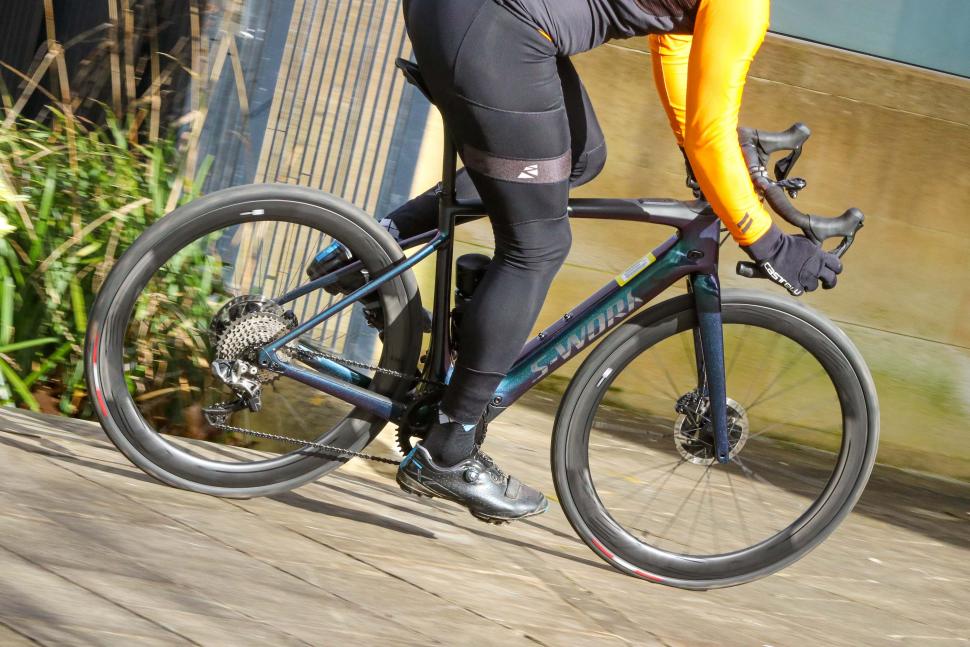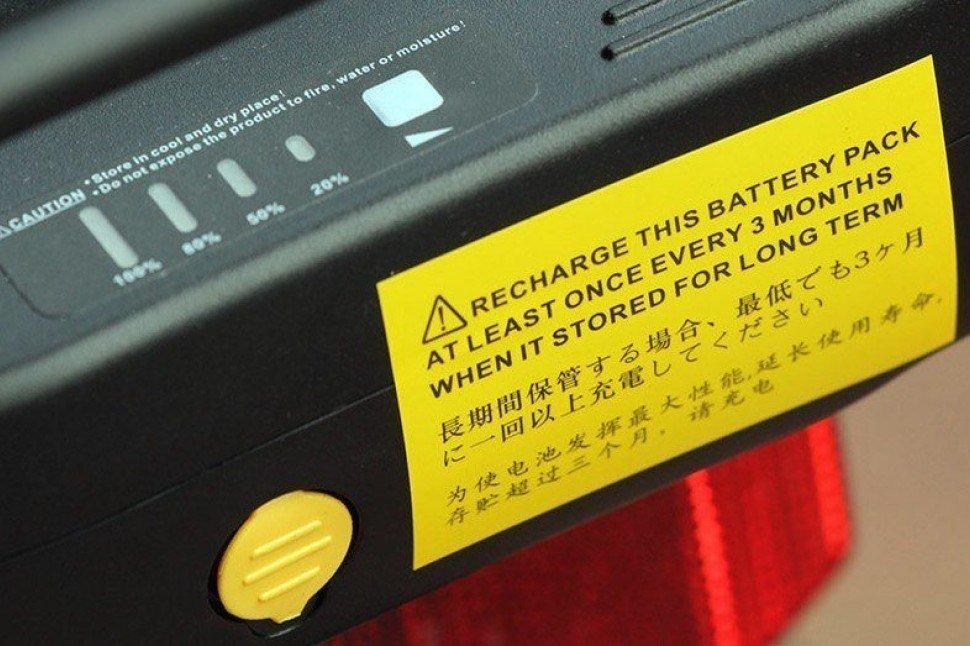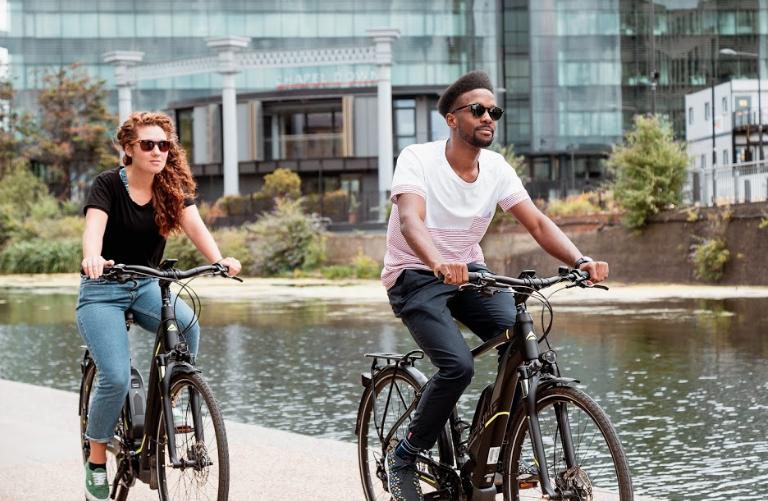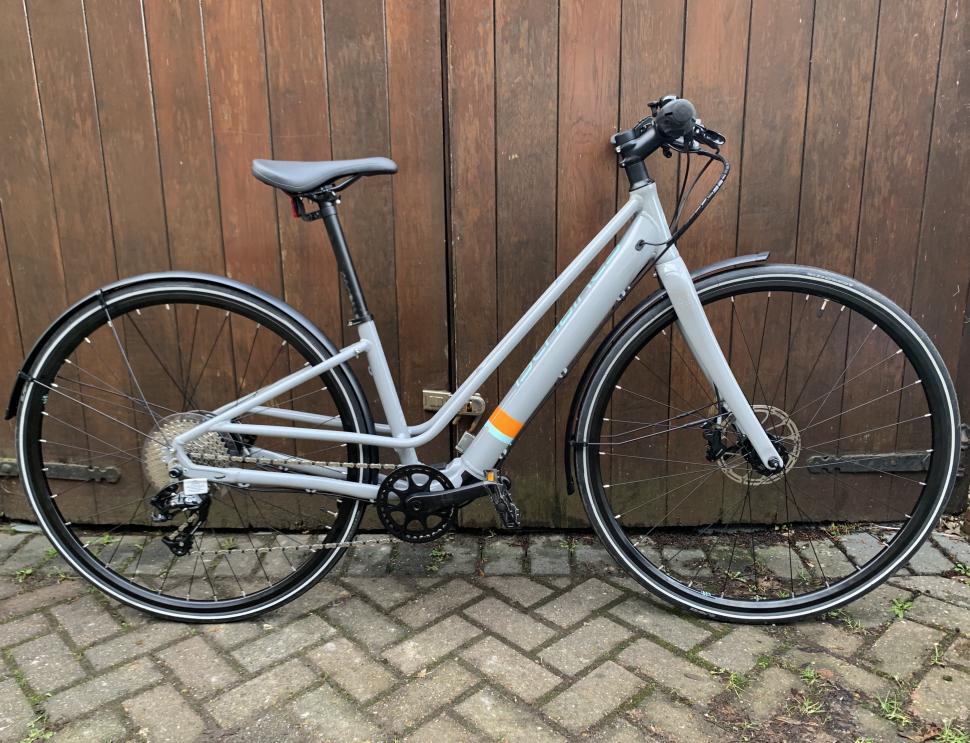- News
- Reviews
- Bikes
- Accessories
- Accessories - misc
- Computer mounts
- Bags
- Bar ends
- Bike bags & cases
- Bottle cages
- Bottles
- Cameras
- Car racks
- Child seats
- Computers
- Glasses
- GPS units
- Helmets
- Lights - front
- Lights - rear
- Lights - sets
- Locks
- Mirrors
- Mudguards
- Racks
- Pumps & CO2 inflators
- Puncture kits
- Reflectives
- Smart watches
- Stands and racks
- Trailers
- Clothing
- Components
- Bar tape & grips
- Bottom brackets
- Brake & gear cables
- Brake & STI levers
- Brake pads & spares
- Brakes
- Cassettes & freewheels
- Chains
- Chainsets & chainrings
- Derailleurs - front
- Derailleurs - rear
- Forks
- Gear levers & shifters
- Groupsets
- Handlebars & extensions
- Headsets
- Hubs
- Inner tubes
- Pedals
- Quick releases & skewers
- Saddles
- Seatposts
- Stems
- Wheels
- Tyres
- Health, fitness and nutrition
- Tools and workshop
- Miscellaneous
- Buyers Guides
- Features
- Forum
- Recommends
- Podcast
feature
 Specialized S-Works Turbo Creo SL - riding 4.jpg
Specialized S-Works Turbo Creo SL - riding 4.jpgE-Bike myths debunked: 6 common misconceptions about electric assistance
E-bikes are here to stay, and are playing an increasingly important role when it comes to getting people on bikes. While a bit of electric assistance is an obvious benefit to some riders, among UK cyclists there are still some misconceptions about what e-bikes offer, and the potential benefits they provide. So, let’s look at the facts behind half a dozen e-bike myths.
> Want more about all things e-bikes? Check out our sister site eBikeTips
Myth #1: You don’t get fit riding an e-bike
Here’s the first thing you often hear: you’ll never get fit/lose weight/improve your cardio on an e-bike. However, modern e-bikes are actually termed ‘electric assist’, so you’ve still got to spin your legs, with the electric power simply helping to maintain a higher speed. Of course, your workout isn’t quite as exhausting as on a non-electric bike, but the actual differences in health outcomes are less significant than you might think.
> 17 of the best electric road bikes
An extensive systematic review of existing studies of the effects of e-bike riding found there was good evidence that e-bike use provides definite health benefits and increased fitness, such as improved oxygen intake and increased maximal power output. One caveat was that e-bike riders have to ride for longer than walkers or conventional cyclists to achieve the same energy expenditure – although, helpfully, the review also said: “e-cycling is associated with lower ratings of perceived exertion than conventional cycling, potentially enabling people to ride more frequently or for a longer duration.”
So how much energy can you burn on an e-bike? The figures often quoted are around 300-400 calories an hour, or about 75% of the amount you’d burn riding a non-assisted bike over the same distance. However, in a direct study on the Electric Bike Blog website, engineer Ron Wensel recorded the calorie consumption he experienced when riding his e-bike. He found that he burned 440 calories in an hour, which was around 80% of his calorie expenditure when riding non-assisted.
Of course, these figures depend on a number of factors, not least how much electric assistance you choose to use. But the beauty of most e-bikes is that, as your fitness improves, you can simply reduce the level of help you require. Meaning that e-bikes also offer a very clear way to judge and develop your fitness, too.
Myth #2: E-bikes run out of power quickly, and then you’re just left with a heavy bike
Not only does selecting the level of electric power you require have a bearing your long-term fitness goals, it also affects individual rides in an immediate way by limiting how far you can ride with assistance. The more power you use, the shorter the distance (range) you can cover with the electric motor contributing. On minimal power settings, though, many e-bikes are quite capable of an assisted range of 100 miles or more.
However, judging range is not some dark art built on hope, good luck and guesswork. Most modern e-bikes have accurate battery level displays and even expected range indications, so you can work out exactly which settings are best employed to get you home. Going one step further, systems like the Bosch Nyon on-board computer even include GPS sat-nav and can offer different routes – fastest, most eco, etc – to get you home before the power runs out.
If something goes wrong and you do find yourself completely depleted of electrical energy, that doesn’t mean you’re left having to hoik some behemoth up the hills. Yes, most e-bike are a little heavier than their non-assisted counterparts – they’re bound to be, with added motors and batteries – but the tide is turning. Top-end road e-bikes are ultralight and even in the urban e-bike market, Islabikes recently sent us one of their eJanis models, which is impressively light at less than 14kg and would be a decent weight even for a conventional bike in this category.
Myth #3: E-bikes are complicated
Certainly there are a few extra bits and pieces to an e-bike but, underneath it all, it is still a bike with established components and technology that hasn’t changed for decades. If you can cope with fixing punctures, setting up gears or adjusting brakes on a conventional bike, you’ll still be able to enjoy doing all the same on a e-bike.
Even with the newer bits of tech involved, e-bikes are very much a product of the modern age with all the holistic and intuitive design that modern life prioritises. Recharging processes are becoming ever more simple and convenient. And the operating systems, such as Bosch Nyon, Shimano STEPs and or Mahle ebikemotion, can be as easy or as complicated as you want, with smart device compatibility or more advanced optional functionality such as integrating heart rate monitor readings.
Essentially: if you can work a normal bike and a mobile phone, you can get your head around an e-bike.
Myth 41: E-bikes are only for old people
Last year, a YouGov survey commissioned by Shimano asked 13,412 people across Europe about their cycling intentions and views about e-bikes. It revealed that 8% of Europeans already owned an e-bike; 17% said they were more likely to purchase or use an e-bike than during the previous year; and 11% revealed that they no longer ride pedal-powered cycles alone.
In country-by-country results, 30% of respondents in Italy were keen to ride an e-bike; 26% in Switzerland, Poland and The Netherlands; 21% in Spain; and 19% France. Numbers this high means these are not ‘just’ old people. As Cycling Industry News reported: “Across the board, the younger demographic had stronger enthusiasm for [an e-bike] demo, running completely contrary to how sales initially tended to go to an older generation seeking new mobility.”
However, if you are a UK cyclist, it’s understandable why your opinion of e-bikes might be skewed towards believing they’re only suited to a select group of riders. In the YouGov survey, the UK lagged at the bottom, with only 7% of those surveyed saying they’d try an assisted cycle. It’s time to change that outdated idea.
Myth #5: Riding an e-bike is cheating
If you are planning to use an e-bike to compete at the Tour de France then, yes, that would be cheating. But that doesn’t apply to the vast majority of people thinking about riding one.
> Are electric bikes cheating?
That systematic review of e-bike studies we mentioned earlier highlighted the fact that e-bikes offer a more accessible way to achieving active travel. And active travel offers all kinds of personal benefits.
“Engagement in active travel, specifically commuting, has been shown to be predictive of a lower BMI and reduced risk of diabetes diagnosis… active commuting, involving cycling, was associated with a lower risk of all-cause mortality and cancer incidence and mortality… [and] commuting by bicycle or on foot was associated with a lower risk of cardiovascular disease incidence and mortality. The greatest gains in health outcomes from active commuting are reported in the least active individuals,” it said.
If the alternative is to be stuck on a bus or train, or vegetating on the sofa rather than enjoying yourself and getting a bit fitter – even if it’s not quite as fit as you’d get on a non-assisted bike - then you’re only cheating yourself.
Myth #6: E-bikes are big and clunky
We’ve already said that e-bikes don’t have to be much heavier than non-assisted bikes, and among many manufacturers, the integration of technology in terms of e-bike user interfaces has been impressively intuitive. But that level of design has also extended to frame construction, and battery and motor integration.
E-bikes of old might have been a bit unwieldy and – to be honest – not always particularly aesthetically sophisticated. But when you have major global bike brands focusing all of their talents on e-bikes ranges – for good financial and market reasons, as the YouGov/Shimano survey highlights – the results in terms of product development is astounding.
There are now many mass market e-bikes – such as the Focus range of road bikes at the top of this page, or Specialized’s cross-discipline Turbo range, or the Islabike eJanis (above) mentioned earlier - that are all-but indistinguishable to their non-assisted equivalents.
It's no myth - e-bikes are fun!
One final myth that's worth mentioning is that e-bikes are not, contrary to popular belief, a modern invention – they’ve actually been around since the late 19th Century. But with the kinds of public health and environmental concerns that are taking precedence in the 21st Century, e-bikes might finally become a truly crucial transport solution.
Of course, if you already cycle - unassisted - why would you need an e-bike? Well here’s one thing that isn’t a myth: they’re also fantastic fun.
Try one – it might be better than you think!
Latest Comments
- Rich_cb 0 sec ago
Labour are centre left. ...
- hawkinspeter 5 min 50 sec ago
...and also can fellow cyclists just stop getting hit by drivers please?
- dubwise 8 min 23 sec ago
I wouldn't trust Starmer as far as I could throw him. Has he stop flip-flopping over what a female is? At the end of the day, they are all lying scum.
- VIPcyclist 42 min 18 sec ago
When I add water to my vest, via sweat or a spray, it has a cooling effect. I learnt at school that, 'evaporation takes away heat.' Maybe a...
- mtbtomo 47 min 32 sec ago
https://www.dolan-bikes.com/alpina-full-carbon-road-fork-matt-black-deep... Would this do it, on the Dolan website?
- Richard Lake 1 hour 12 min ago
I usually avoid big supermarkets if not on my hybrid bike; however out bikepacking last weekend on an evening I just brought my bike completely...
- Cayo 1 hour 36 min ago
Along the lines of zip ties, I have a velcro strap with me. You can buy DIY kits enabling you to cut to length and add a buckle for adjustability....
- BikingBud 3 hours 20 min ago
Not quite sure I fully grasp the message as it is another poorly worded and constructed piece of clickbait but if they fail three times there...
- mattw 3 hours 55 min ago
Well. That one's been dealt with. It seems a lot of Tories voted for the Hi-de-Hi party, cosplaying the 1950s.
- Sredlums 4 hours 37 min ago
Casual use (On a serious note, I was talking about bicycles of course)




Add new comment
52 comments
Agree with all of the above. Don't have a solo eBike but swapped our tandem for an eTandem and we just use it so much more often and don't worry about hills when route planning. Definitely lowered my threshold for looking at eBike when my MTB needs replacement
I'm a convert and I've invested in a road e-bike. I enjoy my normal bike but I want to commute as much as possible and after a long day at work I'm generally exhausted so an e-bike means I can have an easy ride home in the evenings if I'm tired or have a great work out with zero assitance if I've got the energy. The biggest downside for me is the 15mph limit. Given the 15kg ish weight for the road e-bike (with mudguards and gatorskins) it is hard work on anything that I would normally be riding >15mph, i.e under 3-4% incline. If only the pedelec legal speed limit could be lifted to 20mph.........then it would be perfect. I've worked out that the bike will pay for itself within a couple of years if I commute by bike plus I get the extra time in the saddle - its a win win situation.
If only the pedelec legal speed limit could be lifted to 20mph.
I hope not!
I think the current limit is about right. People have enough trouble judging speed of ordinary bikes, so that seems an unnecessary risk if increased.
I think the current limit is about right.
So do I- if they want faster motorised bikes, they can have them regulated like mopeds or other motorbikes, with licences, insurance etc.
As the motors get lighter and less obtrusive when they cut out I think this desire will go away, all the benefits but few drawbacks. As it is over here in Japan we have a 25kmh limit and on the city bike we use for shopping / dropping the kids off at nursery when the assist cuts out it's just way to draggy to make unflustered headway. It is an older bike though, new ones are no doubt better and improving all the time.
Why, apart from your seemingly somewhat irrational bias against ebikes? If I can safely ride 25 mph on the flat on my roadbike, what's the harm in doing 20 mph on an ebike? Logically if the one's unsafe so is the other and all pedal cycles should have to obey a limit of 15 mph as well.
If you could ride around at 25 mph (40kph) on your road bike you'd be a pretty accomplished rider who has developed riding skills, handling, judging distance, etc.
On the other hand, you can just go and buy an e-bike, have none of those skills and mix it with other cyclists on sometimes crowded routes: something I see regularly on the London routes I ride - usually ridden by kids / teenagers and seemingly tuned up - which I think is a thing.
E-Bikes are fantastic. People should get out of their cars and just get out there. But when they do, our hitherto quiet cycle lanes and parks will become more crowded. And your Strava KoM around will belong to Bill, 65, from Walthamstow.
I can - in short bursts and preferably coming off a downhill to start the momentum! But anyone on an ebike or not can easily get up to 25 mph on even a gentle slope, experienced or not.
Illegal overpowered ebikes are a massive problem in London, regularly see people with 750W motors riding at 40mph. As an ebike commuter (weekend roadbiker) I'd be happy to be stopped occasionally by police to check motor legality. It's not hard to identify the illegal ones, they have motor hubs the size of dustbin lids.
I think I have one KOM which is a neighbouring quiet street with about six recorded rides on it, if Bill wants that, he's welcome. As for the cycle paths becoming more crowded, obviously as more ebikers means fewer car drivers we can just take more road capacity for bikes.
I log my ebike rides as such on Strava, so I will not be taking anyone's KoM.
The only Strava times I have confidence in are mine, looking at unassisted times I think there's lots of manipulation going on.
People don't work out the speed of bikes in general. I think if a ebike was going 20 and the rider was making little effort it would be less apparent what the speed is.
Bikes make little sound as well and I have had the odd issue in my car with the electric motor and pedestrians unaware, so perhaps that is why I tend to 15 mph.
I see your point but not sure people make assessments of speed based on rider effort - approaching on my road bike, I might only just have started freewheeling off the back of a 22-25 mph effort. People need to look harder and longer before making decisions about bike speed with all types of bike, don't think that's limited to ebikes.
You can pedal faster if you want but not using an electric motor.. wanna go faster with an electric motor? it legally becomes a motorcycle that must be registered and you need to use a motorcycle helmet, indicators, etc.
My ebike seems to get confused (ahem) by how fast it is going, and can erm sometimes forget to cut out at 15.5mph.
Naughty maybe, but the 15.5mph is clearly stupid as a half decent rider can pootle along at 18mph on the flat. It means that riders are basically pulling a heavy bike around for a lot of the ride.
Now for all you tutting, it's a pedlec and generally cuts out aeound 25, but it aint press a button and you're flying, you put some effort in and shift. I can honestly say from my Strava that the vast majority of segments i do that are less than 5% gradient that my PRs are quicker on my road bike...
UK Law requires you to be at least 16 years old and have a licence to ride a moped (with a speed range of 25-45 kph) on the road. Allowing electric bicycles to provide motorised assistance at speeds of greater than 25kph (the aforementioned 15.5 mph) would likely put them into moped territory legally.
As a result, the simplest way for the government to legislate electric bicycles is to restrict the motorised assistance to speeds below that of a moped. To do otherwise would require wider, and more far-reaching, changes to the rules in order to allow them to still be ridden on the road by those under 16 and without a licence.
I am not making a value judgement one way or the other on whether they should do that (legislation should be a constant work in progress of course to adapt to new technologies) just pointing out that there is a simple and justifiable logic behind the current restrictions.
It's not the riders that obey the law that are the problem, it's the ones with their super-charged monkey bikes flying around at 40mph not giving a f**k. They're already breaking the law. No point in coming up with new ones for them to break...
E-bikes on public roads are meant to be an assist for hills, not a cheap alternative to using a motorbike that must be registered.. those e-bike riders that want electric assistance to keep up with traffic speeds are breaking the law and deserve to get treated like an unsociable chav by the plod.
The weight makes little enough difference to speed on the flat. Uphill the ebike has the advantage anyway, despite its extra weight. In any case, the weight penalty is reducing all the time.
I think the 25kph assist limit is spot on. It means that ebikes simply enable the less fit, less able or less inclined to access similar cycling performance to the general average of riders. It also boosts the endurance of any rider, but without elevating their speed outside of normal cycling performance.
That means that ebikes can be legislated exactly as ordinary bikes. Once you allow a significant gap to open between normal and assisted bikes then the latter cease to be regarded as bicycles and will be subjected to more onerous regulation.
My father-in-law bought an e-bike recently and after I built it I had a go of it. Bloody hell it was good. Even in the lowest setting where you'd be looking at getting about 40-50 miles out of it I was blown away at the usability and how little impact the assistance felt. He's all over the place on it now and definitely has gotten fitter.
Personally I mostly ride to batter myself and compare my times, with a few social rides but if I had an e-bike I could see me using this a lot more, maybe even commuting to work on it.
There's a viable reason e-bikes are the fastest growing segment.
Totally agree with all that, especially the last part. The number of people who are still saying "yeah, maybe I'll get one when I'm older..." No! Get over yourself and give one a go now! They're hilarious.
I made up my wife's bike to an ebike. It has given her a far greater range and speed. Ive ordered one myself and I can cycle a 100miles motor unassisted
I suspect a significant part of the 'ebikes are for older people' attitude has been down to the hefty price tag attached to ebikes - if you're fit enough to get around on a traditional bike, and earlier in your career so you don't have so much disposable income, it's harder to justify a significant premium for electric assist. As prices come down so that there's less of a differential, maybe that will help to reduce that image.
Pages